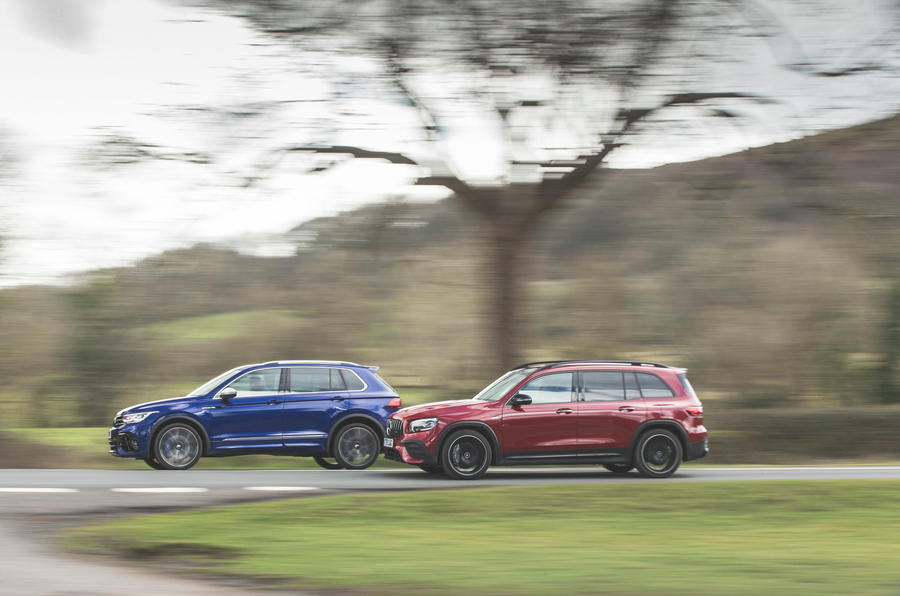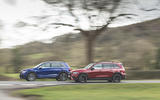Can we pretend that neither the finest hot hatchback of the modern era, nor one of its more accomplished adversaries, ever existed? Just for the next 10 minutes? It’s the only way we’re going to get through this test while giving these crossovers a fair hearing, because the truth is that the new Volkswagen Tiguan R and Mercedes-AMG GLB 35 are deliberately and irreversibly compromised from the outset.
The hot hatches in question are the Golf R and the AMG A35. Both are great performance cars, but especially so the Golf, which has during the past decade gained a reputation for excellence based on its sublime mix of everyday usability and prolific speed. If you want unassuming yet exciting, the Volkswagen is where you start.
Excellence is a fragile thing, though. If you were to inject an extra 195kg into the latest Golf R, pull the axles 49mm farther apart and set the seats a Coke can higher, you’d expect to jeopardise the recipe. Which, not to put it too bluntly, is what the Tiguan R does. The GLB 35 takes a similar approach, only with the A35 as its base and with an even more significant accretion of flab. It weighs almost 1800kg all-in and is 99kg heavier than the VW. And all this even though neither car carries anything more wholesome than an inline four. Porkier, taller and wider than we’d like, they’re both resolutely compromised.
But that’s the last we’ll say by way of comparison to the hatchbacks. Clearly these crossovers will be dynamically inferior to their progenitors, but they’re worth exploring because in isolation they still seem to have an awful lot going for them –and, of course, the market demands them. Alongside the GLB, AMG now makes no fewer than 10 further SUV derivatives, which is more than any other bodystyle, and Volkswagen already has dedicated R-badged models for the Volkswagen T-Roc and Volkswagen Touareg, which straddle the Tiguan in terms of seniority.






























Join the debate
Add your comment
EU car manufacturers keep complaining about the increasingly onerous corporate emissions limits and yet, they still keep churning out more and more of these stupid, grossly overweight crossovers and SUVs. Cars should be taxed by weight, with due allowance for battery weight on pure EVs.
Easy really. The Merc has a little unique character. The VW is a fatter, less fun Golf R. These hot SUVs are a bit stupid though, aren't they?